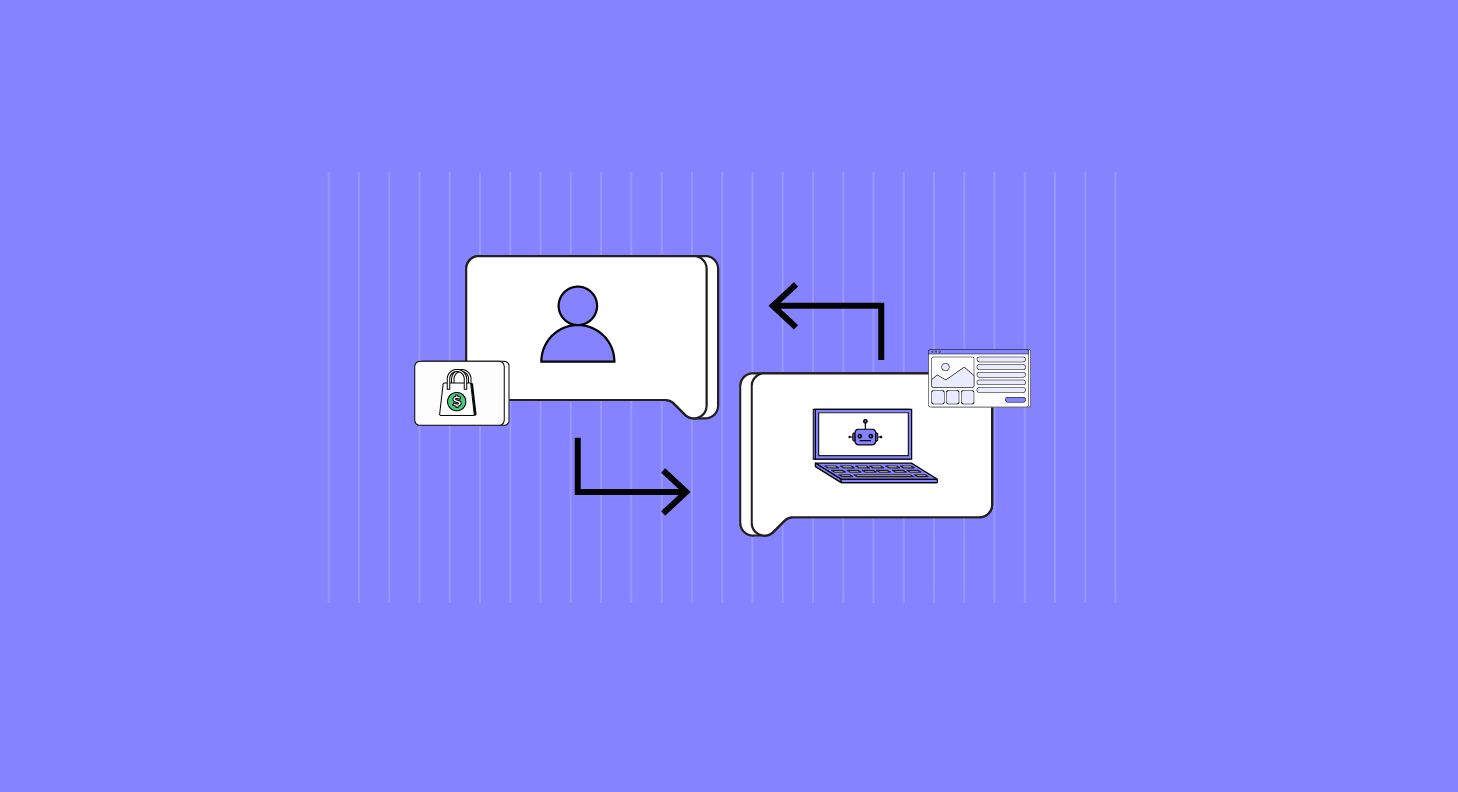The Role of Natural Language Processing In Fashion E-commerce
Natural language processing gives you a competitive advantage by revealing insights hidden in the words of your customers.

As an e-commerce leader, recognizing the power of data-driven insights helps you enhance customer experience and boost sales. Advances in natural language processing (NLP) have unlocked new opportunities to understand your customers through the words they write. By analyzing product reviews, social media posts, and customer service transcripts, you gain valuable intelligence into what your customers want, like, and expect from your brand.
Harnessing natural language processing allows you to identify trends, learn customers' values and priorities, and make data-backed decisions to optimize your business. When you know what resonates with your customers, you can provide the products, services, and experiences they crave. By listening to the voice of the customer through natural language processing, you build loyalty and turn customers into lifelong brand advocates. For fashion e-commerce, natural language processing is essential in staying up to date with customer expectations in an industry where tastes change as fast as the seasons.
Staying ahead of trends and delivering what customers want is key to success. Natural language processing gives you a competitive advantage by revealing insights hidden in the words of your customers. Understanding language is understanding people, and understanding people is understanding business.
Natural Language Processing In Fashion E-Commerce
Natural Language Processing (NLP) refers to the ability of a computer system to understand, interpret and generate human language. NLP powers many applications in e-commerce like chatbots, product recommendations, and search.
In fashion e-commerce, NLP helps online retailers better understand their customers and products. By analyzing customer reviews, product descriptions, and other text, NLP can identify:
- Trends in customer sentiment towards brands, products or service
- Frequently mentioned attributes like fit, quality or style
- Relationships between products based on similarities in text
This analysis provides valuable insights that improve the customer experience. Retailers can recommend products suited to customers’ needs and preferences. They can highlight or re-word product details to match what customers care about. Chatbots and virtual assistants can engage customers more naturally using a vocabulary and style appropriate for fashion.
Some e-commerce companies are also testing NLP for automated product tagging. By understanding the text and images on a product page, AI models can suggest tags that match the item. This makes products more discoverable on the site and across the web.
In summary, natural language processing helps fashion e-commerce companies better understand and connect with their customers through the words and language surrounding products, brands, and shopping experiences. When implemented thoughtfully, NLP can significantly enhance a customer’s journey from discovery to purchase and beyond.
How NLP Powers Product Recommendations in Fashion Ecommerce
As an ecommerce merchant in the fashion industry, you have access to a wealth of customer data that can be leveraged to provide personalized product recommendations and improve the customer experience. Natural language processing (NLP) techniques allow you to gain insights from all this unstructured data to better understand your customers’ needs, interests, and shopping habits.
How NLP Powers Product Recommendations in Fashion Ecommerce
NLP analyzes your customers’ interactions with your online store, including:
- Product reviews and ratings
- Questions and comments on social media
- Chatbot and live chat conversations
- Email newsletters and promotions opened and clicked
By extracting topics, themes, and sentiments from this data, NLP can determine your customers’:
- Product preferences: Identify which types of products, brands, styles, or attributes your customers favor. Recommend similar or complementary products.
- Size and fit preferences: Detect if customers frequently need to size up or down and recommend the appropriate size for new products.
- Seasonal interests: Identify if customers shop more often for summery versus wintery clothing and make recommendations aligned with the current season.
- Price sensitivity: Gage if customers generally prefer budget-friendly or high-end options and recommend products at a suitable price point.
- Overall style: Classify your customers into style profiles like “classic”, “trendy”, or “bohemian” and provide outfit inspiration and complete looks tailored to their style.
By leveraging NLP to gain a deeper understanding of your customers, you can provide highly tailored product recommendations and an exceptional shopping experience. And happy, loyal customers mean increased sales and revenue for your fashion business.
Sentiment Analysis for Better Understanding Customers
Sentiment analysis allows e-commerce companies to gain valuable insights into customer opinions and emotions. By analyzing customer reviews and ratings, companies can identify:
Positive Sentiment
Positive sentiment refers to comments expressing satisfaction, delight or excitement. Identifying what customers enjoy about products helps companies enhance those features and improve the overall customer experience. For example, if customers frequently praise a clothing line for its high-quality, comfortable fabrics, the company may invest more in sourcing premium textiles.
Negative Sentiment
Negative sentiment refers to comments articulating disappointment, frustration or dislike. Pinpointing customer pain points enables companies to address issues, mitigate dissatisfaction and limit negative word-of-mouth. For instance, if customers commonly complain about lengthy delivery times, the company could streamline its shipping and logistics processes. Responding to individual negative reviews in a constructive manner also helps reassure customers that their feedback is heard and valued.
Opportunities for Improvement
Sentiment analysis tools can detect suggestions for improvement in customer feedback. Comments recommending additional styles, sizes or functionality provide product development ideas companies may want to consider. Mentions of desired features not currently offered represent potential opportunities for expansion into new areas. Staying on the cutting edge of customer wants and needs is vital for fashion e-commerce success.
By systematically examining customer sentiment at scale, fashion e-commerce companies gain data-driven insights to enhance the customer experience in a personalized way. The ability to track how sentiment changes over time further allows companies to measure the impact of any optimizations, ensuring they are moving the needle in the right direction. Leveraging sentiment analysis is a key strategy for building brand loyalty and long-term relationships in today's digital world.
Improving Customer Service With Sentiment Analysis
Sentiment analysis allows e-commerce companies to analyze customer feedback and reviews to determine overall satisfaction and identify areas for improvement. By applying natural language processing to parse written feedback, companies can gain valuable insights into customer sentiment.
Detecting Positive and Negative Feedback
Sentiment analysis uses algorithms to detect the overall tone and attitude in written feedback as either positive, negative, or neutral. Positive feedback indicates satisfaction and happiness with a product or service. Negative feedback signals disappointment, frustration or unhappiness. Neutral feedback is impartial or ambivalent.
E-commerce companies can analyze trends in sentiment over time to measure impact of changes. For example, if a new return policy leads to a spike in negative feedback, it may need to be re-evaluated. Sentiment analysis also identifies key themes in feedback, e.g. comments regarding product quality, shipping, or customer service. This helps companies pinpoint specific pain points to address.
Responding to Customer Feedback
Sentiment analysis empowers e-commerce companies to take targeted action in response to feedback. They can reach out to dissatisfied customers to apologize, clarify any misunderstandings and make things right. For recurring issues, they can make policy or operational changes to improve the overall customer experience. Satisfied customers can also be engaged by thanking them for their positive feedback and encouraging additional reviews or social shares.
In summary, sentiment analysis gives e-commerce companies valuable insight into how customers truly feel about their brand. By systematically analyzing written feedback at scale, companies can better understand customer needs, strengthen relationships, and make meaningful improvements to products, services and policies. With the power of natural language processing, sentiment analysis is an indispensable tool for improving the customer experience.
Generating Marketing Insights Through Text Analysis
Natural language processing (NLP) techniques can provide valuable insights into customer interests and preferences by analyzing user-generated text on fashion e-commerce platforms. Two of the most useful NLP applications for generating marketing insights are:
Sentiment Analysis
Sentiment analysis refers to the use of NLP to determine the attitude, opinions and emotions of customers based on their written reviews and comments. By analyzing the sentiment of user reviews of products, brands can gain a better understanding of how customers truly feel about their products and services. This allows them to make improvements to increase customer satisfaction and loyalty.
Topic Modeling
Topic modeling is an NLP technique used to analyze unstructured text and automatically discover hidden themes and topics. When applied to user reviews and comments, topic modeling can reveal the main subjects of discussion and areas of interest for customers. For fashion brands, this could highlight the attributes and features that are most important to their target customers, such as style, fit, quality, sustainability, etc. Brands can then tailor their product designs, marketing campaigns and content to focus on these key areas of interest.
In summary, NLP and techniques like sentiment analysis and topic modeling provide an automated way of gaining valuable insights from customer reviews and feedback. By understanding customers' opinions, emotions, interests and priorities in their own words, fashion brands and e-commerce platforms can make more informed business decisions to improve the customer experience. Using NLP for marketing insights helps ensure that brands stay closely aligned with the voice of the customer.
The Future of AI and NLP in Fashion Ecommerce
The future of AI and NLP in fashion ecommerce looks promising. As these technologies continue to advance, they will transform the online shopping experience.
Personalized Recommendations
AI-powered personalized product recommendations rely on analyzing customer data to determine items that suit each shopper's unique tastes and needs. By understanding customers' past purchases, browsing history, and preferences, NLP algorithms can suggest highly tailored product recommendations in real time. This helps guide customers to items they will likely want to buy, increasing sales and customer satisfaction.
Virtual Assistants
Chatbots and virtual assistants that utilize NLP can have natural conversations with customers to help them find products, check order status, return items, and get answers to questions. These AI assistants are available 24/7 and can handle many routine customer service tasks, freeing up human customer service agents to focus on more complex issues. With continued progress in NLP, these AI assistants will become increasingly sophisticated and human-like.
Automated Descriptions
NLP enables automated generation of product descriptions, titles, and summaries. AI systems can analyze thousands of product details, images, and attributes to automatically write concise yet compelling product copy for ecommerce websites. This helps reduce the time and cost involved in manually creating product descriptions. The generated text is also optimized for search engines, which helps increase product visibility and traffic.
The future is bright for the role of AI and NLP in fashion ecommerce. These technologies will continue to enhance the customer experience through personalized interactions, streamlined shopping, and automated product content creation. Ecommerce businesses that leverage AI and NLP will thrive with increased sales, higher customer satisfaction, improved operational efficiency, and a competitive advantage. The future of online retail is AI-powered.
Conclusion
As you have seen, natural language processing has an enormous role to play in the future of fashion e-commerce. With increasingly sophisticated AI and machine learning techniques, systems can gain a deeper understanding of language to provide highly customized product recommendations and an improved customer experience. Retailers that fail to adopt and harness emerging technologies like Artificial Intelligence and NLP risk being left behind in today's fast-paced digital landscape.
However, those that embrace them have the opportunity to gain valuable insights, build loyalty, and boost sales through personalization. NLP is transforming ecommerce as we know it. The future is bright for fashion brands that make the investment in this innovative and impactful technology.

